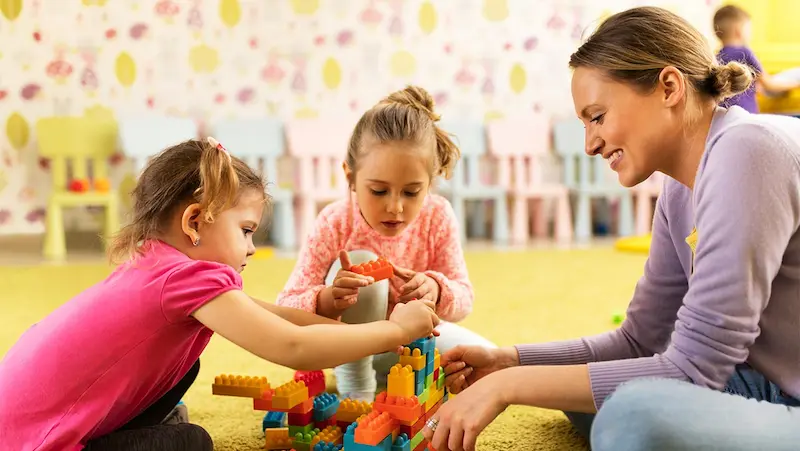As parents and caregivers, our homes and backyards become both playgrounds and learning environments for our children. Kids are naturally curious, exploring the world around them with enthusiasm—and often without an understanding of potential risks. This guide will help you make your home and outdoor spaces as safe as possible, while still encouraging kids’ natural curiosity and independence.
Creating a Safer Indoor Environment
1. Home Safety Basics
Children’s curiosity leads them to every corner of the home, and it’s natural to worry about their safety. Making small changes in daily routines and setups can prevent many common injuries:
- Button Batteries: Tiny, shiny, and easy to swallow, button batteries are found in everyday items like remote controls, watches, and musical toys. They’re surprisingly dangerous if swallowed, causing internal burns within hours. Store items with button batteries securely and out of sight. If a battery goes missing, check the area thoroughly, and always dispose of used batteries immediately.
- Smoke Detectors: Working smoke detectors are crucial in giving you time to act in an emergency. Follow the manufacturer’s instructions for maintenance, including testing them regularly and changing the batteries. It’s a simple action that can save lives.
- Appliance Safety: Cords from everyday appliances like toasters or kettles can be irresistible for small hands. Keep cords tucked away or secured out of reach. Additionally, turning pot handles inward while cooking prevents little ones from accidentally pulling a hot pot down on themselves.
- Hot Surfaces: Kids may see a fireplace or stove as something to touch or climb, especially in colder months. A safety barrier around these areas can prevent accidental burns. Remember, surfaces can stay hot for quite some time after being turned off.
- Outlet Covers: Electrical outlets are at a child’s eye level, making them particularly tempting. Plastic covers can keep little fingers or objects from finding their way into unused outlets, preventing shocks or burns.
2. Chemical Safety
Household chemicals are essential for cleaning and maintenance, but they can be extremely harmful if ingested or inhaled by children. Here’s how to make your home safer:
- Storage and Handling: Household chemicals like bleach, paint thinners, and other cleaners are common but dangerous. Store them in locked cupboards, and always keep them in their original containers to prevent confusion. Avoid storing them in drink bottles or food containers, as even adults might mistake them.
- Teach the Symbols: If your child is old enough, explain that hazard symbols mean “Do Not Touch.” It’s also a good idea to keep the poison control number handy or programmed in your phone.
- Don’t Mix Chemicals: This is a good rule for everyone in the house, as combining chemicals (even seemingly harmless ones) can create toxic fumes. Make it a habit to read instructions and to close containers securely after each use.
3. Furniture and Television Safety
Young children love to climb. From dressers to shelves, furniture can tip over unexpectedly, causing serious injury. A few proactive steps can prevent accidents:
- Secure Furniture: Heavy furniture like bookshelves and dressers should be anchored to the wall with safety straps or brackets. If you’re purchasing new furniture, choose pieces with a broad, stable base that sit directly on the floor.
- Television Placement: Place TVs on low, stable stands designed to hold their weight, or attach them to the wall. Avoid putting attractive items (like toys) on top of the TV or high shelves, as this can tempt children to climb.
4. Window Blinds and Cords
Window blind cords can be a hidden danger, as they pose a risk of entanglement or strangulation. To make your windows safer:
- Out of Reach: Opt for cordless blinds in children’s rooms if possible, or keep cords well out of reach. Wrap the cords up high, using a cleat or tie to keep them securely fastened.
- Furniture Placement: Move cribs, beds, and chairs away from windows to keep children from reaching blind cords. Even if the cords are tied, moving furniture away from windows is an extra layer of security.
Outdoor Safety for Active Playtime
1. Sun Safety
Playing outside is one of the best parts of being a kid, but it’s essential to protect young skin from sun exposure.
- Dress Smart: Dress your child in lightweight, long-sleeved shirts, pants, and hats with a wide brim. Sunglasses that block UVA and UVB rays protect their eyes as well.
- Sunscreen Routine: For children over six months, apply SPF 15 or higher sunscreen when the UV index is 3 or higher. Reapply every two hours or after swimming or sweating. Try to limit outdoor play between 11 a.m. and 4 p.m., when UV rays are strongest.
- Find Shade: Encourage play in shaded areas when the sun is at its peak, or bring a large umbrella for beach days. Reflections from water, sand, and even concrete can double UV exposure, so even on cloudy days, it’s worth protecting skin from indirect sunlight.
2. Playground Safety
Playgrounds are a world of fun for kids, but they come with a few potential hazards that parents can help them avoid:
- Supervise and Teach: Keep an eye on kids while they play, and teach them not to push, shove, or climb in ways that could lead to falls. Check the playground equipment for hazards like ropes or ties that could pose an entanglement risk.
- Clothing Considerations: Remove any items with strings or ties that could get caught. Even bicycle helmets can become dangerous if they get stuck in playground equipment, so it’s best to remove them during playtime.
Creating Safer Spaces
Taking these steps to childproof your home and outdoor areas can help prevent many of the common injuries that children face. Supervision is crucial, but so is creating an environment where children can explore safely. Remember, these small changes make a significant difference. Letting kids play and discover in a secure environment means you can spend more time enjoying those precious moments without constant worry.


